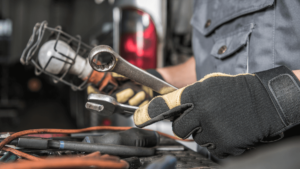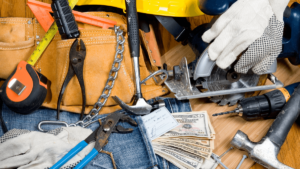Do you often struggle with finding the tool you need in a messy toolbox? Do you have to move a pile of screws, bolts, and other bits just to find the right socket or a screwdriver?
But what if you could turn your jumbled mess into a more organized and efficient storage space for all your tools?
That way, you’ll be able to grab what you need and continue working without interruption. What is more, properly sorting your tools also affects their durability and lifespan.
If you’re looking for a sign to organize your toolbox, then continue reading to learn more about different organization methods for any untidy toolbox.
In this article...
Have a Place for Everything
Having a dedicated space for your tools will keep you more organized, but you have to be strategic about it.
Every time you want to purchase a new tool, consider where you’ll store it. Sticking it in a random drawer or leaving it lying around is how working areas quickly become cluttered and even dangerous because of the tripping hazards.

Planning and keeping track of your tool inventory is one of the best ways to prevent tools from piling up.
Remember, it’s far easier to find the tools you need if you create an efficient storage space where you know where everything is kept.
Customize Your Toolbox With Foam Organizers
Toolboxes come in various sizes, and people use them for different purposes. But having a foam liner you can easily cut into any shape and size you want is an excellent method for better organization.
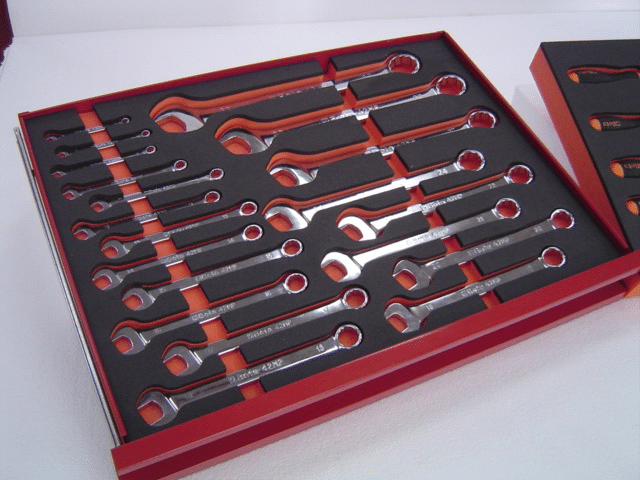
Foam organizers also come pre-cut from a manufacturer, but an even better idea might be to buy a foam liner roll and customize your organizational inserts to get the most out of it.
First, plan out which tools you’re going to store. Then, lay them on the foam liner and trace the outline of the tool with a marker. Finally, when you’re satisfied with the layout, start cutting slots.
Also, if you have any foam liner scraps, you can use them as dividers in toolbox or cabinet drawers.
Foam organizers are highly versatile organizational tools that cater to your unique storage needs.
Create Compartments for Small Pieces
Do you often struggle with keeping your nuts and bolts in one place? The smallest working parts have the unfortunate tendency to go missing or end up in places they’re not supposed to be.
That’s why a great way to keep them organized is to sort them by size and type in small containers within a cabinet, like this one.

These clear containers make it easy to see what’s stored in them, but you can also place labels on them to find what you need faster. In most situations, having a well-organized space means keeping the smallest items neatly stored and off of your workstation.
Organize Your Drawers From Top to Bottom
How you organize your drawers depends on your needs and preferences. You might want to keep the most used tools in top drawers to avoid bending over frequently.
Alternatively, you might believe that storing tools strictly by size and weight is the best option.
In fact, generally, what works for most people is sorting their drawers with the lightest tools stored on top and the heaviest ones on the bottom.
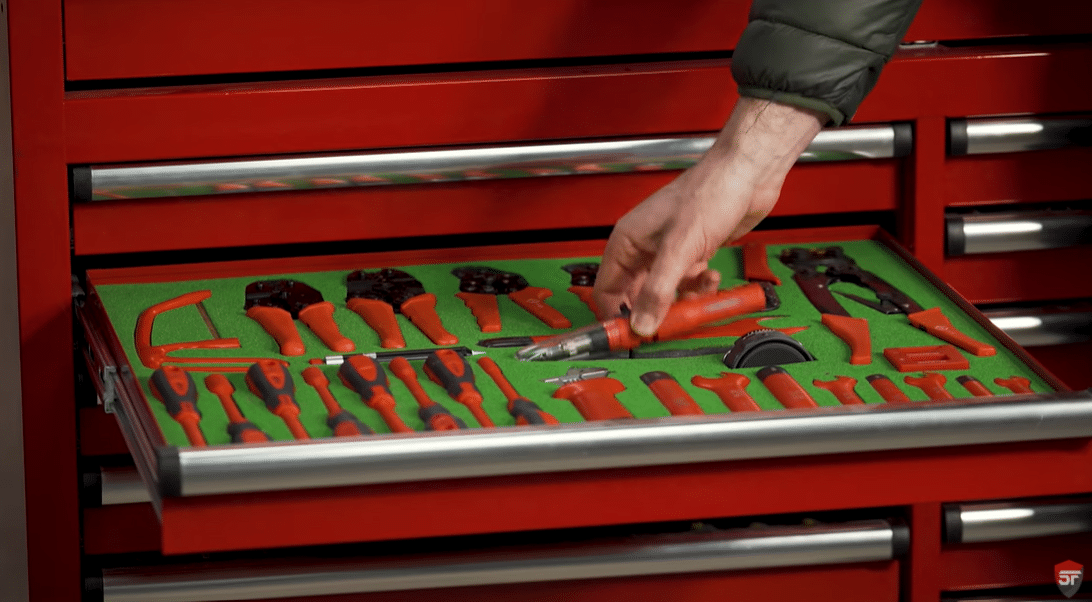
Therefore, put sockets, tape, line levels, and hooks in the top drawer. Medium-sized tools such as hammers, screwdrivers, and pliers are best suited for the center drawers.
Finally, place heavy tools such as drills, electric chainsaws, circular saws, and polishers in the bottom drawer.
This arrangement also makes the tool cabinet more stable, so you’re preventing workplace accidents as well.
Keep Drawers Organized With Trays
You might be familiar with trays used to separate your kitchen utensils. The same organizing method can be used for your toolbox!
These inserts will neatly sit inside your toolbox and separate different items. You can even use different colored trays for various tools and small items.
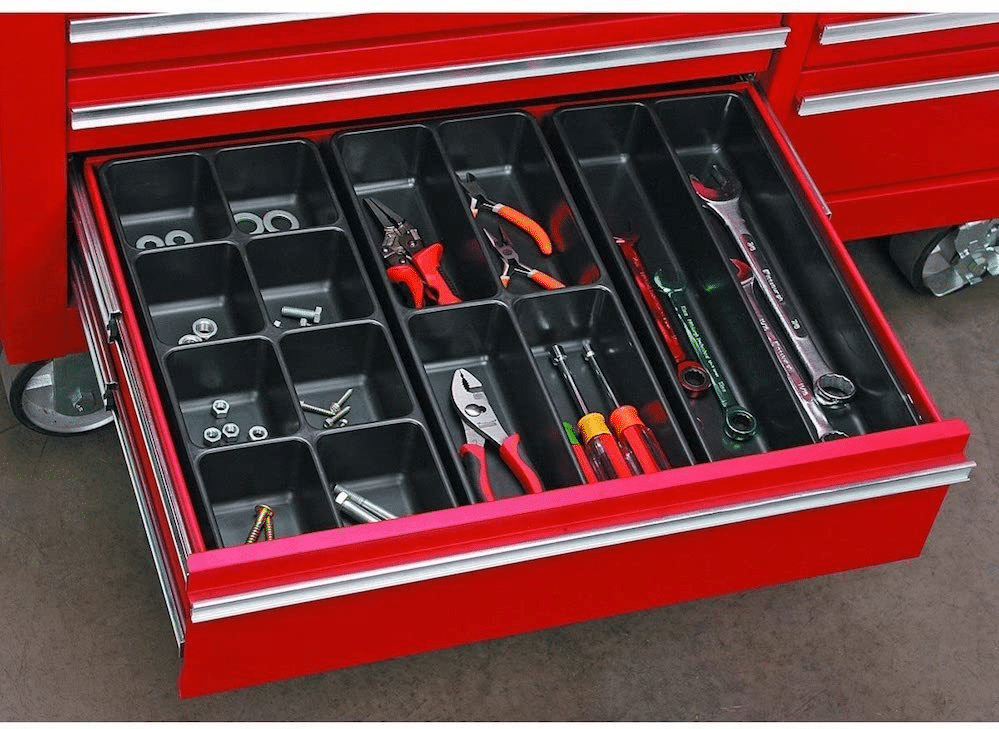
Most importantly, by using trays, you can quickly grab what you need for your next job with a single glance at your toolbox.
This is a great way to reduce the time wasted rummaging in search of the right sized screwdriver or a larger quantity of the right bolts.
Invest in Stackable Containers
Some items can be too large or awkwardly shaped to be kept in a traditional toolbox.
An easy fix would be to use stackable plastic bins to make the most of the space in your storage area.
As we mentioned earlier, they should be clear so you can see different stored items, but a large label also does wonders for faster access and organization.

This will ensure all tools and supplies are returned to their designated bins, and you’ll have a decluttered space to focus on your work.
Utilize Pegboards
If the storage room you have at your disposal is limited, find a solution that will maximize the use of the space you have.
Most people use pegboards for lighter items because they’re inexpensive and highly customizable. What’s great about them is that you can store different tools, supplies, and accessories and have a perfect overview of your inventory at eye level.
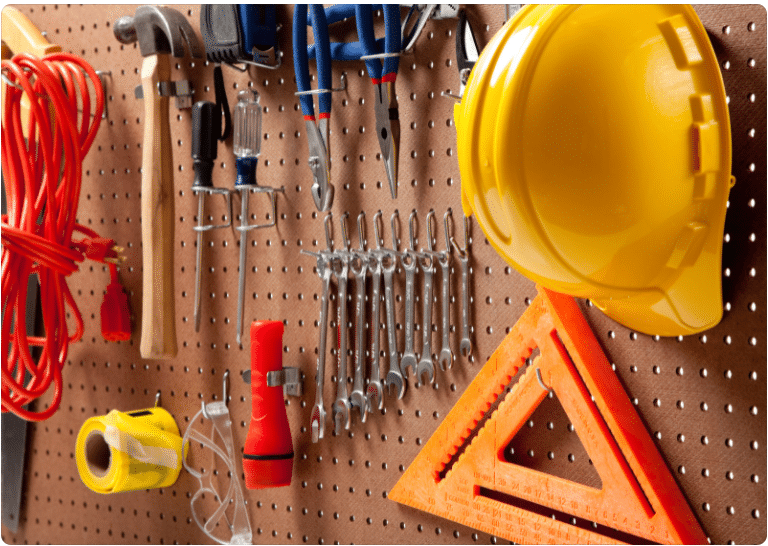
What’s more, you don’t have to limit yourself to placing pegboards on walls. You can also attach them to cabinet doors or the sides of a workbench.
Each inch can be transformed into a storage area if you’re ready to think outside the box.
Use Magnetic Boards
If you want to prevent your metal tools from moving too much in your toolbox, attach a magnetic tool board at the bottom of the drawer.
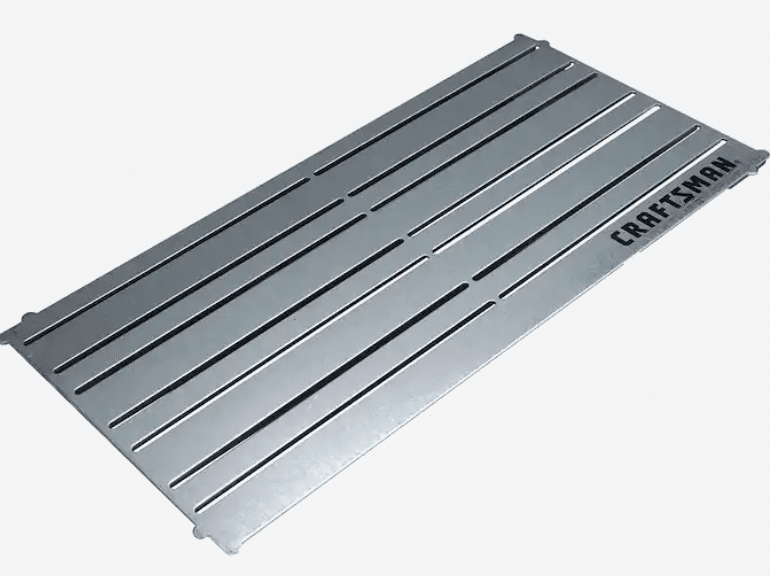
This will keep the tools in place, but you can also space out different metal tools for better organization. Additionally, you can attach some magnetic organizers outside of your toolbox for easy access.
In summary, use the power of magnetic force to customize the organization of your metal tools.
Keep Your Socket Holders Organized
Sockets are one of those small items that are extremely useful and complete any contractor’s toolbox. Yet, they’re also easy to lose.
The good news is you can eliminate the unnecessary searching for missing sockets with a socket organizer.
They’re very convenient and can hold up to 80 sockets in one set. But before you choose one, keep in mind that some socket organizers have both imperial and metric options, while others are built for one or the other.
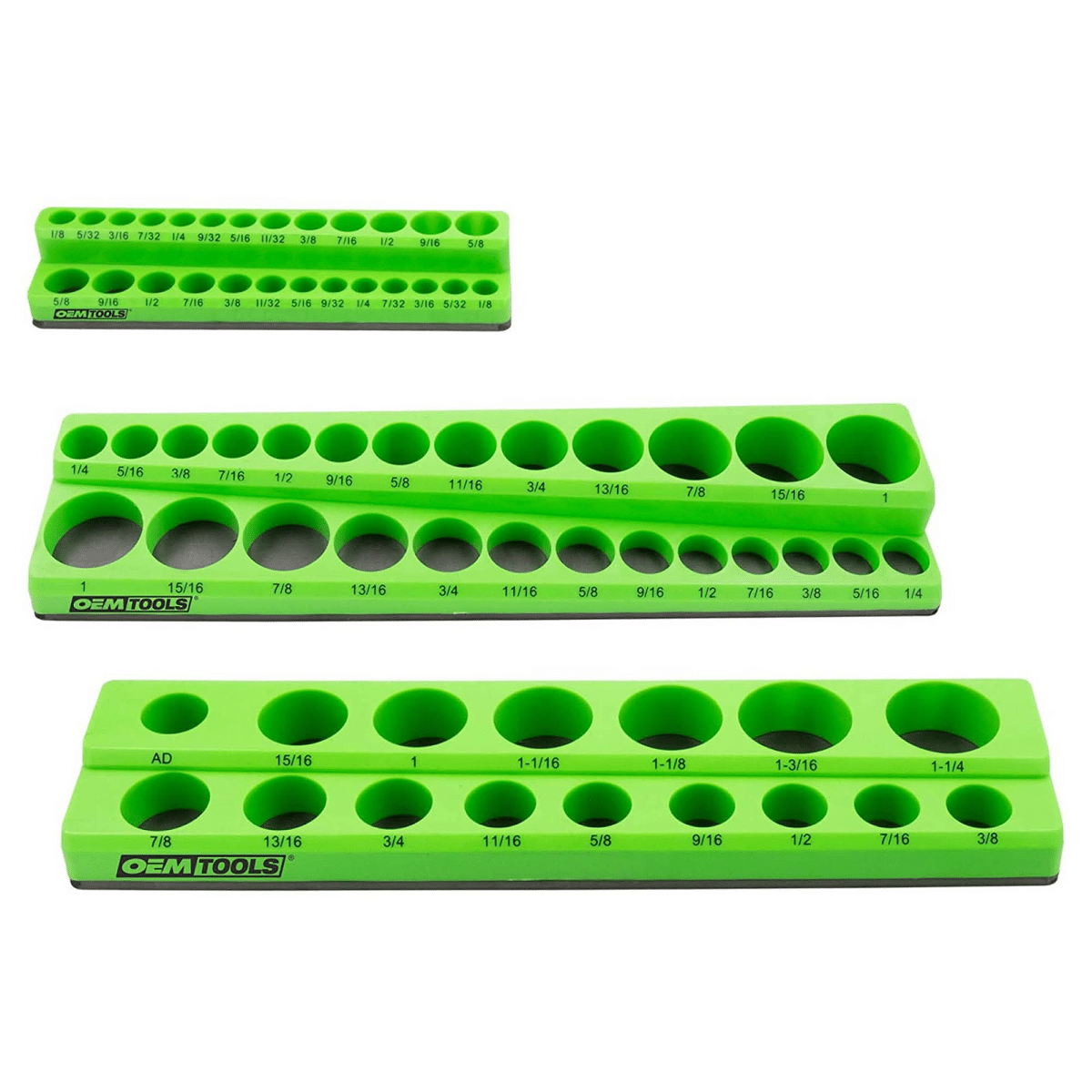
An additional tip would be to find a socket organizer with magnetic pockets, so sockets stay in place as you’re working. Finally, choose more durable ones, made from aluminum or durable plastic.
Choose a Mobile Toolbox for Flexibility
You’ll probably have to move your tools and supplies across different areas as you’re working on a project at a site or your workshop. That’s why smart contractors and workers invest in mobile toolboxes.
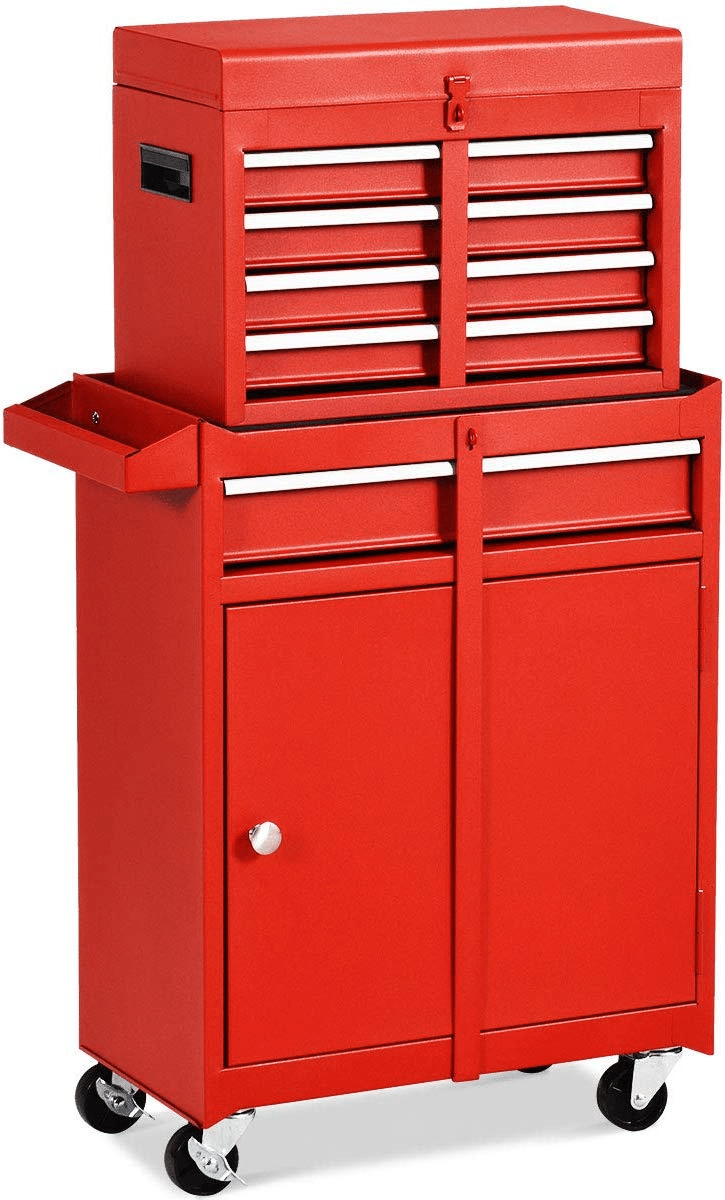
It is a good idea to opt for mobile toolboxes made from sturdy materials such as steel or aluminum. Even though they might be more expensive than plastic ones, their durability is invaluable for construction professionals.
They will keep your tools safe from extreme weather, but they will also provide you with much-needed flexibility when transporting tools.
Invest in a Bin Rack for Small Parts
Do you also need a mobile solution to transport small parts like nuts and bolts around your working area?
Then, pick a wheeled bin rack equipped with small compartments. For example, the one pictured below.
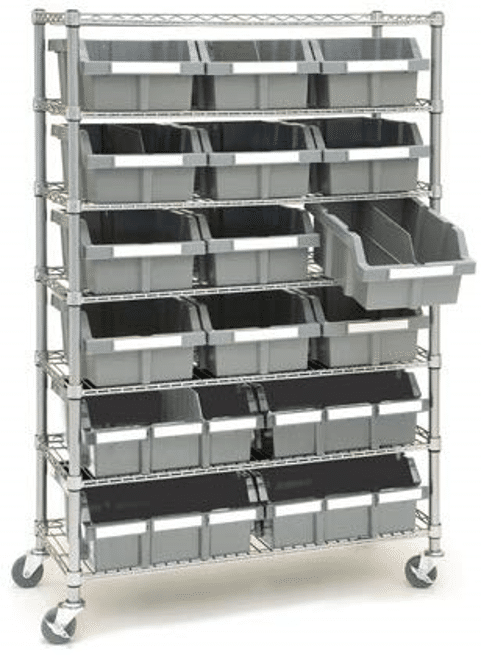
The great thing about this bin rack is that the compartments are deep enough to store a lot of small items. You can even put large labels on each of them to easily locate the specific type of screw or nail.
Additionally, the compartments easily slide out, but they’re locked in place as you move the bin rack around. That way, nothing can fall out.
Rather than using multiple boxes to store your bolts, nuts, and screws, keeping them in one large and sturdy bin rack is the best solution.
Lock Away Your Most Valuable Tools
Tools are valuable, so you don’t want them lying around on the construction site, risking theft and misplacement.
According to recent police reports, construction sites lost £57,000 worth of power tools every day in 2020. The reports also suggest that thieves are more likely to steal powered hand tools than non-powered ones.
So, an efficient security measure to deter opportunistic thieves is to store them inside a cabinet you can lock.
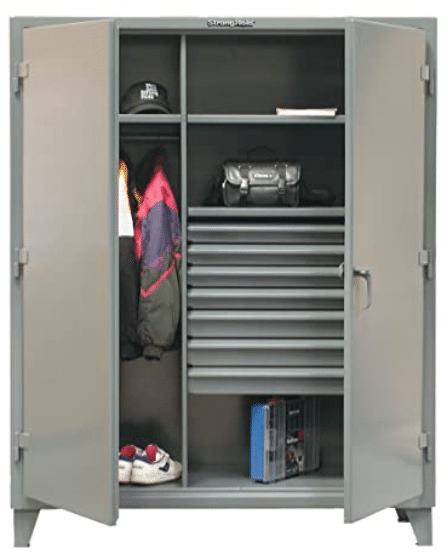
While there are many options at your disposal, consider a sturdy lockable cabinet like this one. I
t’s 78” tall and can take up to 1900 lb of various equipment and tools. It’s an all-welded design and fully assembled, so all you have to do is find a suitable space in your storage area and place it.
Use Up Your Wall Space
Look at the walls in your storage area. Can you say ‘’free real estate’’?
Basically, if your floor space becomes limited, utilize the walls to store your tools. Simple wall-mounted tool organizers can take all your large hand tools such as shovels, brooms, rakes, or sledgehammers that are cumbersome to store in cabinets.

Just like with pegboards, you’ll have a great overview of your tools at eye level and conveniently arrange them in otherwise unused space. An additional tip would be finding a unit with durable anti-slip hooks that will keep these long tools in place.
Simply put, expand your storage capacity with wall-mounted organizers to keep large hand tools out of the way.
Create a Docking Station for Power Tools
Do your cordless power tools dream of a customized charging station like this one?
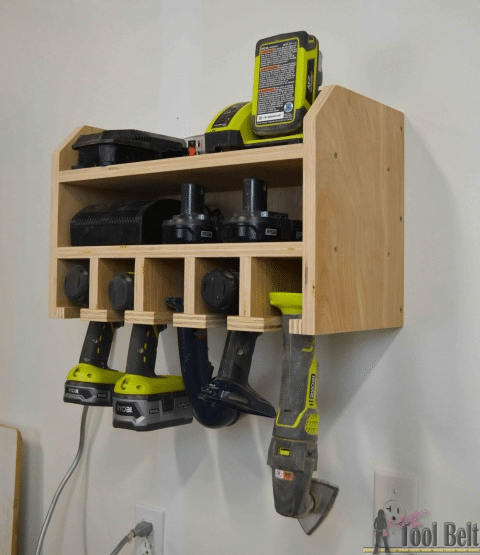
This custom charging station is wonderful if you have a small number of power tools. But you can scale this unit for your construction site or create multiple small units for each employee.
Following that, don’t forget about adding an outlet and drawers for batteries.
To sum up, create a more functional storage space with a custom charging station for your most used electrical power tools.
Have a Few Magnetic Dispensers at Hand
Construction might be dirty work (literally!), but that doesn’t mean you need to be as well.

A great companion to any toolbox is a magnetic dispenser. You can attach them to any metal surface to hold gloves, paper towels, or tissues.
As you’re working, having a conveniently placed magnetic dispenser will help you keep dirt, oil, and moisture from your hands and face.
Have a Tool Bag at Hand
A special tool bag you can take to any worksite is invaluable for organized and productive construction workers.
Luckily, most portable tool bags have numerous features, and come in various materials and construction.
For example, this tool bag has a polyester covering with a waterproof reinforced plastic base. It also comes with adjustable shoulder straps and a handle.
Plus, the bag has six external and four internal pockets to store as many tools as possible while keeping them organized.
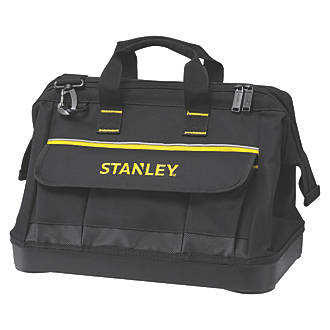
If that’s not what you’re looking for, consider tool bags with a nylon covering, rubber base, padded handles, or extendable handles and wheels.
The most important thing is having a tool bag that will provide you easy accessibility, and keep your tools safe and organized.
Keep Your Cleaning Supplies Separate
As you’re well aware, an essential part of maintenance is cleaning your power tools. But once you’re done, where do you put your cleaning supplies?
You should store your cleaning supplies in separate containers or caddies like this one. This will prevent any spillage, and the caddies are easily transportable.
The plastic construction makes them lightweight, and the silicone handle is more comfortable to grip and carry.
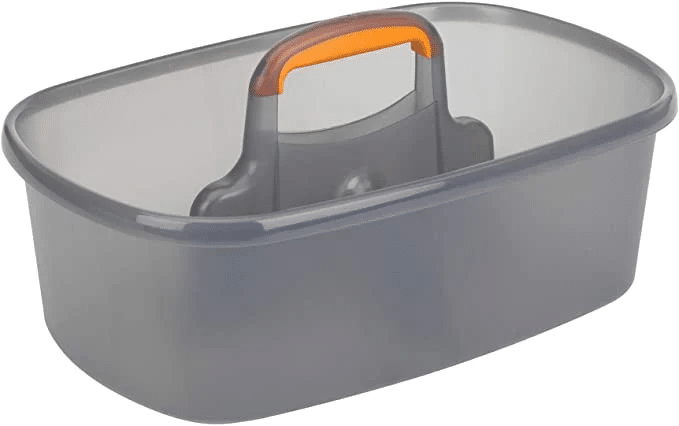
While cleaning and organizing your tools is essential, don’t neglect your cleaning supplies. They can also benefit from a bit of organization.
Organize the Tools In Your Vehicle Too
If you frequently drive from one construction site to another, organizing a toolbox in your vehicle might be helpful.
When you embark on this challenge, keep in mind that layering is key. Put your most used items on top. At the bottom, you can place tools you don’t use as often.
This will prevent you from endlessly searching for specific tools while you’re using the vehicle in the field, and consequently improve your productivity.
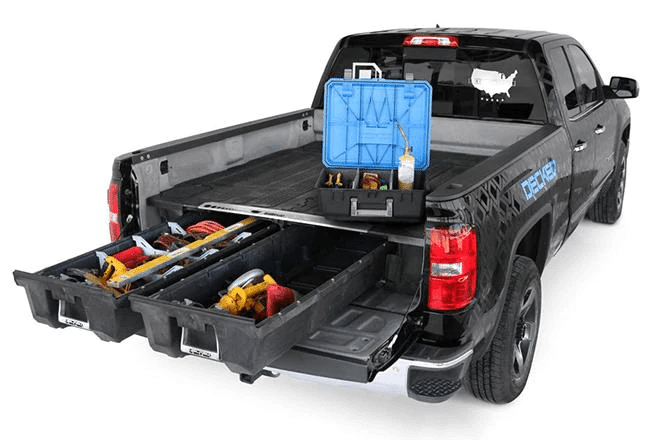
Another thing to consider is creating subdivisions in your toolbox, so greasy tools don’t touch other items.
In short, with a few simple organization methods, you can create the ultimate portable toolbox in your vehicle.
Conclusion
An organized toolbox is beneficial for everyone. Having an optimized layout and effective toolbox storage solutions will keep your tools safe and more accessible. But most importantly, it’ll help you and your workers save time and energy.
So, set aside a few hours to organize your toolbox according to our tips to work faster and more efficiently.







